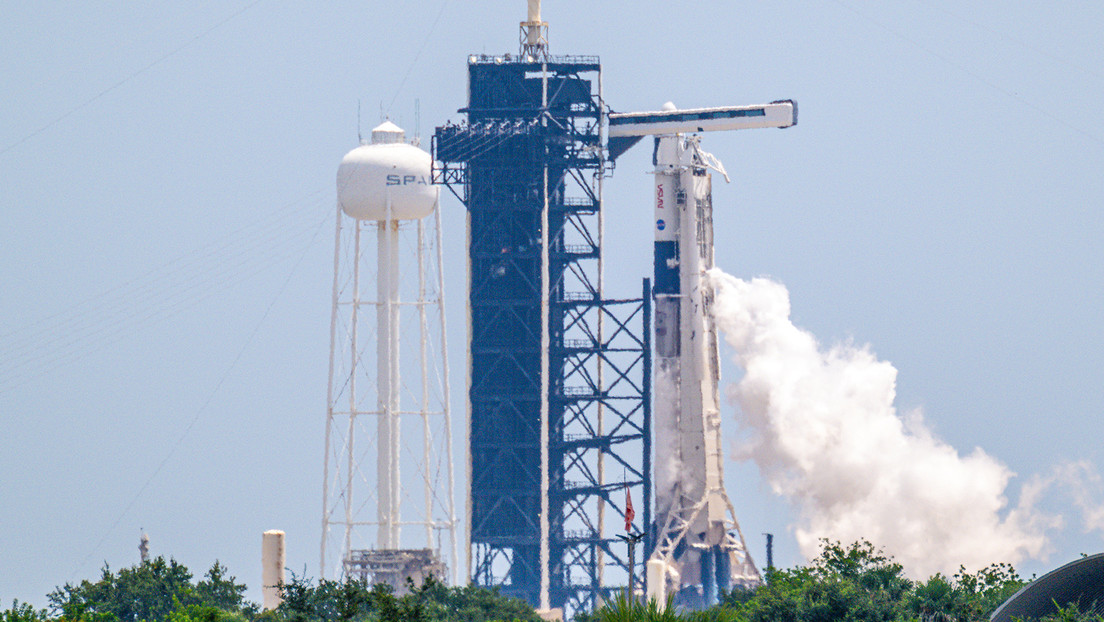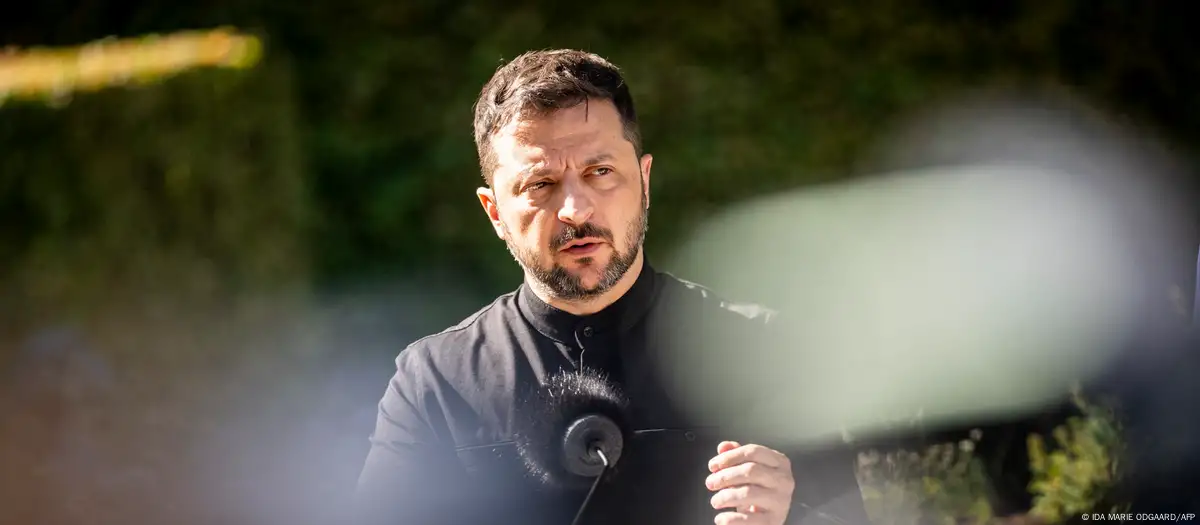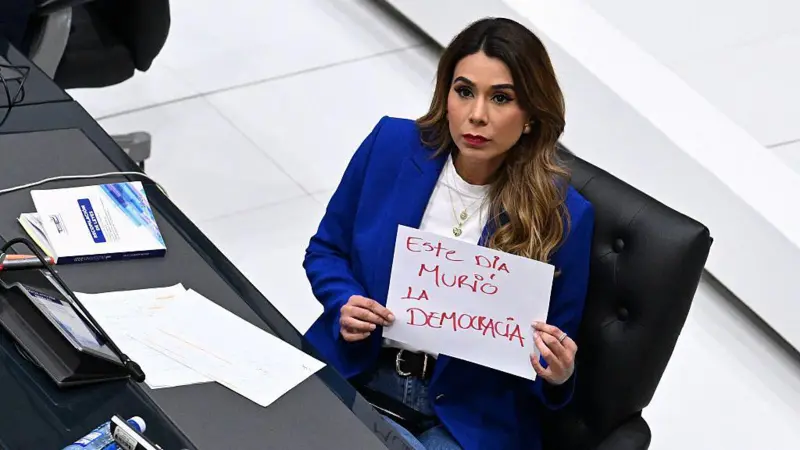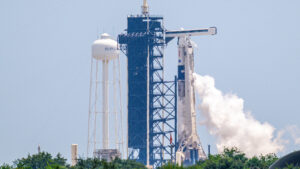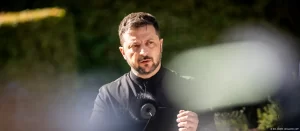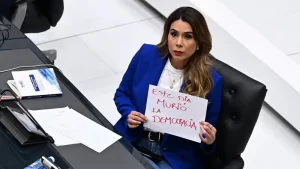st 440 unmarked graves found in recently liberated Ukrainian town CNN —
Until a few weeks ago, it looked as though the conflict in Ukraine would head into the bitter winter months frozen in place – with neither side making appreciable progress.
That prognosis has changed with the sudden and successful Ukrainian offensive through most of occupied Kharkiv, which has galvanized Ukraine’s Western backers as much as it has led to recriminations in Moscow.
The Russian military must now ask itself what sort of force, and where exactly they are deployed, can regain the initiative after Ukraine captured more territory in one week than Russian forces had in five months.
There are important political dynamics involved too. The Kremlin faces tough choices: whether to declare a general mobilization to reinvigorate its increasingly ragged units in Ukraine and how to manage a budget deficit – even though it’s sitting on historically high foreign reserves.
Far beyond the theater of war, Russia must choose how far to weaponize its influence over Europe’s gas supply, as governments prepare to spend big to mitigate the effects of exceptionally tight supply.
Another potential dilemma: the first signs that Chinese support for the Russian invasion, never whole-hearted, may be waning.
A changing battlefield
Ukraine’s stunning counter-offensive across Kharkiv, combined with more attritional advances in the south, have presented the Kremlin and Russia’s much criticized Defense Ministry with a range of bad options.
As winter approaches, they must choose which front to prioritize, and whether to double down on efforts to fulfill Putin’s stated objective: the seizure of Donetsk and Luhansk regions. The Russians currently hold about 20% of Ukrainian land, including Crimea and parts of the south.
Taking Donetsk is a taller order now for the Russians. Seven months of war have shown the shortcomings in Russian logistics, which will get no easier in wetter, colder weather.

Wounded Ukrainian soldiers are seen in a vehicle in the freed territory of the Kharkiv region, Ukraine, Monday, September 12, 2022.Kostiantyn Liberov/AP
In a matter of days, Russia lost one of three axes of attack in Donetsk; no progress has been made on the other two since the end of June.
At the same time, Russian defenses in Kherson are under growing pressure despite being reinforced, thanks to Ukraine’s success in cutting off resupply across the River Dnipro and in targeting command posts and ammunition depots.
The Russian military does not have a wealth of fresh units to inject into the conflict. The recently stood-up 3rd Army Corps largely comprises volunteer battalions recruited across the Russian regions. Other battalion tactical groups have been reconstituted after suffering heavy losses. There are persistent reports of discipline fraying among Russian units. The disorderly retreat in Kharkiv, with vast amounts of military hardware abandoned, is testament to that – and to chronic command problems that will not be remedied overnight.
Obviously, Ukraine has also lost thousands of soldiers, including many from its best units in Donbas. And a NATO military official told CNN that while the sweep across Ukraine had been a major boost for morale, “I can’t imagine the same thing happening twice.”
And Russia’s artillery and rocket forces still vastly outnumber those of Ukraine. But it’s been unable to leverage this superiority into gains on the ground. Some 40% of Donetsk remains under Ukrainian control.
President Vladimir Putin acknowledged this on Friday – saying that the offensive operation in the Donbas “goes at a slow pace, but it keeps going. Gradually, gradually, the Russian army occupies new territories.”
And despite calls in Moscow for a general mobilization, this still seems unlikely. Putin said: “We are fighting with only part of the Russian army, the part that’s on contract …Therefore, we are not in a hurry on this part.”
A Ukrainian victory?
Some observers have begun to ask whether a Ukrainian victory is conceivable. That depends on how victory is defined. It is President Zelensky’s stated intention to recover all occupied territories as well as Crimea.
General David Petraeus, former CIA Director and commander of US military forces in Iraq, said he expected Ukraine to retake territory seized by the Russians since February, and “it’s even conceivable they could retake Crimea and the Donbas,” aided by growing resistance in occupied areas.
But that would take time and involve tough fighting, Petraeus told CNN. If that were Ukraine’s goal, its supply lines would be stretched and its better units spread thin. In turn, Ukrainian forces would be vulnerable to counter-attacks.
Ultimately, Ukraine’s battlefield success will depend on a continuing and expanded supply of Western hardware. Meetings in the next few weeks will determine what’s in that pipeline, but inventories in several countries are dwindling.

Rescuers help people to flee a flooded area after a Russian missile hit a hydraulic structure in Kryvyi Rih, Ukraine.State Emergency Service of Ukraine/Reuters
US officials are also wary that Ukraine might overplay its hand. The US is still exceptionally cautious about sending Ukraine weapons that have a range of more than 80 kilometers (nearly 50 miles) and could therefore strike deep inside Russia. It has so far resisted Ukrainian requests for long-range Army Tactical Missile Systems (ATACMS) that have a range of up to 300 kilometers.
Some Western officials fear humiliation for the Kremlin might provoke an unpredictable reaction, even including tactical nuclear weapons.
A former NATO deputy secretary-general, Rose Gottemoeller, told the BBC this week: “I do worry about that kind of scenario at the moment… The goal would be to try to get the Ukrainians in their terror to capitulate.”
Back in February, on the eve of the invasion, Putin warned that any country standing in Russia’s way would face “consequences such as they have never seen in their history.”
But Olga Olika, director of the Europe and Central Asia Program at the International Crisis Group, believes the Kremlin would not countenance such an escalation because “detonating weapons of mass destruction would provoke international retaliation, including, quite possibly, direct military involvement from NATO.”

Ukrainian firefighters put out a fire after a Russian rocket attack on an electric power station in Kharkiv on Sunday, September 11, 2022.Kostiantyn Liberov/AP
US President Joe Biden appeared to confirm this in a “60 Minutes” interview – a clip of which aired on CBS Evening News on Friday. He warned Putin against escalating the fighting further in Ukraine, saying that there will be consequences if the Kremlin used chemical or nuclear weapons in the fighting.
“Don’t. Don’t. Don’t. It would change the face of war unlike anything since World War II,” Biden said. Asked by Scott Pelley what the US response would be if Russia used a chemical or nuclear weapon, Biden said it would be “consequential.”
Other analysts point out that the use of tactical nuclear weapons would have limited military benefits, and that the military might even defy an order from Putin for their use.
“It is hard to imagine that even nuclear strikes would allow Russia to break Ukraine’s will to resist,” said General Valerii Zaluzhnyi, Ukraine’s Armed Forces commander in chief.
Russia still has an intimidating arsenal of ballistic and other missiles that could be used not to gain territory but to inflict catastrophic damage on Ukraine’s infrastructure: power, water and communications.
On Russian state television, pundits have argued for Ukraine’s power and water infrastructure to be destroyed. And there have been signs of Russian missile forces doing just that – with attacks on power supplies in Kharkiv and hydraulic gates on a reservoir in Kryviy Rih in recent days.
Nevertheless, the trajectory of the war looks different heading into the final months of a year that began with few hopes Ukraine could resist the Russian behemoth. That in itself may stiffen the backbone of European support – and spur the continuing pipeline of military aid – despite an expensive winter of discontent over heating and fuel prices.
The gas gambit
It’s long been evident that part of the Kremlin’s strategy is to knee-cap European resolve in supporting Ukraine by plunging it into an energy crisis, literally turning off the gas taps.
At a forum in Vladivostok earlier this month, Putin said: “We will not supply anything at all if it is contrary to our interests. No gas, no oil, no coal, no fuel oil, nothing.”
Amid setbacks on the battlefield, Ivo Daalder and James Lindsay write in Foreign Affairs that “Putin’s best hope — perhaps his only hope — is that Western support for Ukraine will crumble as the costs of war, including energy shortages and rising prices, begin to hit home in Europe.”

A Ukrainian service member checks Russia artillery shells captured during a counteroffensive operation near the town of Izium on September 14, 2022. Iryna Rybakiva/Ukranian Armed Forces/Reuters
Natural gas prices in Europe are 10 times higher than a year ago, earning Russia about $1 billion a day in the first three months of the conflict from energy exports. And the sanctions regime against Russia will only have significant impact in the longer-term, because the Russian economy is so self-contained.
But the coming winter will be the acid test of Moscow’s energy squeeze. Rather than looking for compromise, European governments have concluded that concessions would only embolden the Kremlin. They are set on heavy spending to protect consumers and a longer-term strategy to reduce dependence on Russian energy. After scouring the world for alternative suppliers, they have built up reserves (in France’s case to more than 90% of capacity).
Even though wholesale gas prices are still numbingly high, they have fallen by about one-third in the last three weeks. Some analysts think they will further do so, reducing the cost of subsidies being introduced by European governments already strapped for cash.
There are also signs that Russia’s windfall from sky-high oil and gas prices may have peaked. The International Energy Agency forecasts that Russian oil production will be 17% lower by next February compared to pre-war output, once the full force of EU sanctions are felt.
Daalder and Lindsay believe Ukraine’s allies have set their course. “Many skeptics in the West believe democracies will buckle in the face of hardship,” they wrote. “But such voices underestimate the West’s staying power.”
No doves of peace
The signals from both sides indicate they are digging in for a long winter, rather than exploring prospects for a settlement.
“Russia will do everything to end the conflict in Ukraine as quickly as possible, but Kyiv refuses to negotiate,” Putin said at a meeting with Indian Prime Minister Narendra Modi on Friday. In the meantime, Russia’s goal was still “the liberation of Donbas” and there was “no hurry.”
But the Russian leader also acknowledged the “concerns” that both India and China have about the conflict.
Chinese leader Xi Jinping, in his first meeting with Putin since before the invasion, notably did not refer to Ukraine by name, according to a read-out from Beijing. Some observers believe Beijing is subtly adopting an arm’s length approach to the Russian quagmire in Ukraine. How that may play into Putin’s calculations is as yet unknown.
For their part, the Ukrainians have been consistent about not negotiating with Moscow unless and until all occupied territory is recovered. Zelensky has angrily rejected suggestions from French President Emmanuel Macron, former US Secretary of State Henry Kissinger and others that Ukraine should negotiate so as not to humiliate Russia (Kissinger later withdrew his recommendation).
Given the current state of the battlefield, there is little incentive for Ukraine to seek a truce, while the Kremlin would be hard pressed to spin the results of its “special military operation” if one-third of the Donbas is still in Ukrainian hands.
Former CIA Director and retired US Army general David Petraeus believes Russia faces a “disastrous situation” militarily. He told CNN Russia was “literally running out of soldiers, ammunition, tanks, fighting vehicles and so forth.”
A NATO military official told CNN that he expected Putin would have to rethink his position by next spring “if NATO stays united over the winter’s energy problems and if Ukraine keeps up the fight. But he won’t negotiate earlier, as a cold winter is his best weapon.”
After that, the full effect of embargoes on Russian energy by Western governments and Japan, and on the export of high-tech equipment to Russia will begin to bite. The latter is already beginning to take a toll on weapons production, forcing the military to dust off arms that had been in storage.
The Ukrainian conflict has thrown up plenty of surprises – and predictions may be a fool’s errand. The current shape of the battlefield suggests that the initial roles of Ukraine and Russia – defense and attack – may be reversed in coming months, while Russian forces double down on remorseless bombardment of civilian and military targets.
Fuente: CNN, EEUU


